Tissot vs Longines: Swiss Watchmaking Giants Face Off
In the world of Swiss watchmaking, Longines and Tissot stand out as two iconic brands with rich histories and distinctive offerings. While both deliver exceptional quality, they cater to different segments of the luxury watch market. This comparison delves into their brand heritage, design philosophies, craftsmanship, technology, and pricing to help you determine which brand aligns best with your horological preferences. Whether you're drawn to classic elegance or cutting-edge innovation, understanding the nuances between Longines and Tissot will guide you towards the perfect timepiece for your wrist.
Brand Histories and Heritage
The legacy of a watchmaker plays a crucial role in shaping its identity and appeal. Both Longines and Tissot boast impressive histories rooted in Swiss watchmaking tradition, yet each has carved out a unique niche in the luxury timepiece market. Let's explore how these venerable brands have evolved over time and what their heritage means for today's watch enthusiasts.
Longines: A Legacy of Precision and Elegance
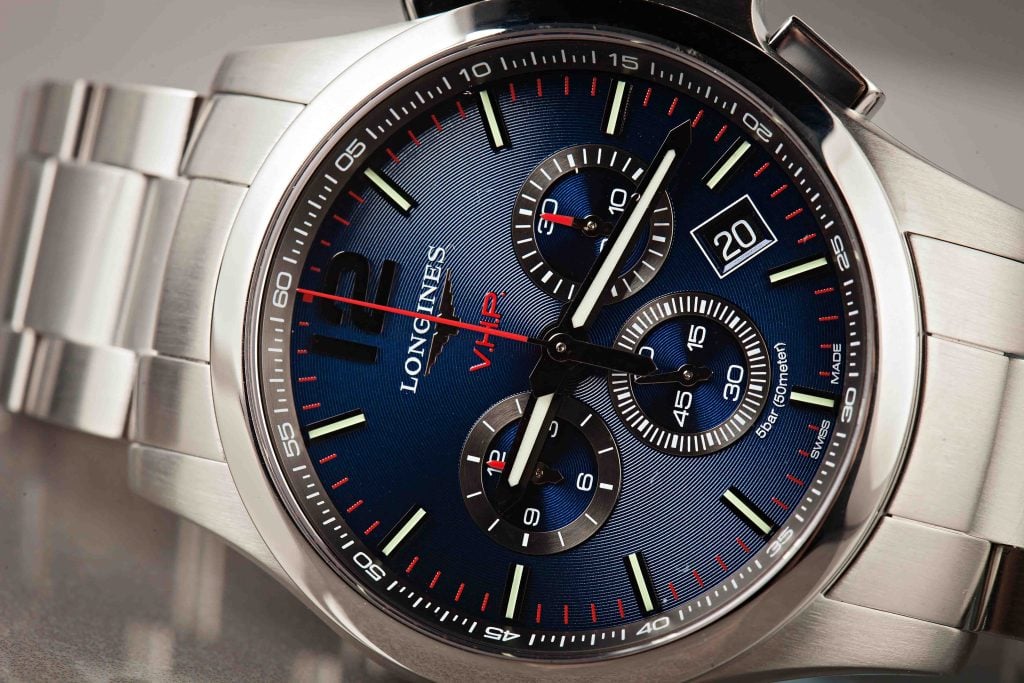
Founded in 1832 in Saint-Imier, Switzerland, Longines has been a beacon of horological excellence for nearly two centuries. The brand's winged hourglass logo, registered in 1889, is the oldest unchanged trademark still active in the watch industry. Longines built its reputation on precision timekeeping, playing a pivotal role in sports timing and aviation. The company's commitment to elegance and performance has earned it a distinguished place in the luxury watch market.
Throughout its storied past, Longines has achieved numerous milestones that have solidified its status as a premier watchmaker. The Longines' history is marked by significant innovations, including the creation of the first wristwatch chronograph in 1913 and the development of ultra-thin movements in the 1970s. These advancements not only showcased the brand's technical prowess but also its ability to adapt to changing market demands while maintaining its core values of precision and elegance.
Longines' rich heritage extends beyond watchmaking into the worlds of aviation, sports, and exploration. The brand has been associated with numerous pioneering expeditions and has served as the official timekeeper for world championships in various disciplines. This blend of adventure and precision has become an integral part of Longines' identity, appealing to those who appreciate watches with both historical significance and modern reliability. Today, Longines continues to draw inspiration from its storied past, creating timepieces that honor its heritage while embracing contemporary watchmaking techniques.
Tissot: Innovation Meets Accessibility
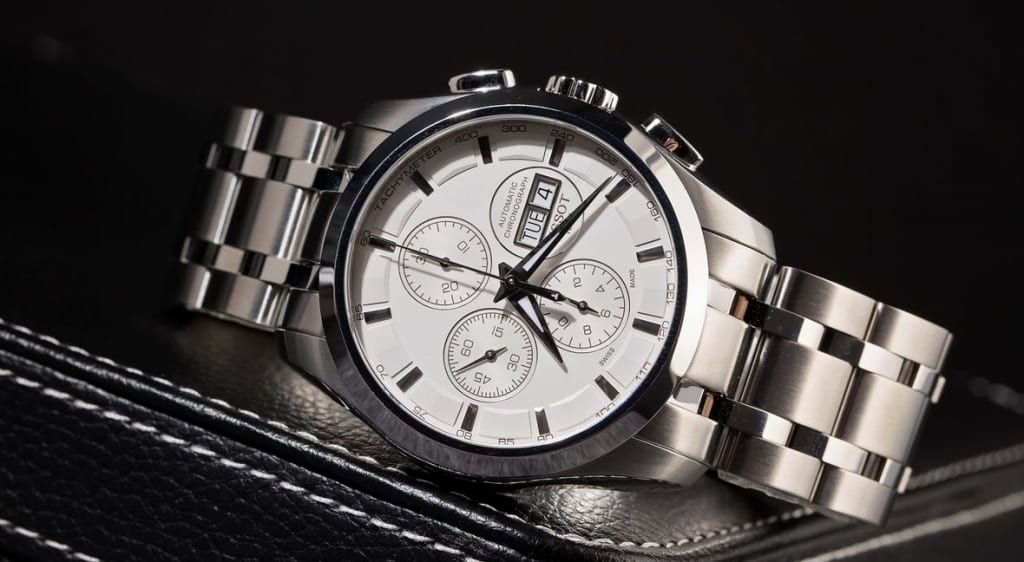
Tissot's journey began in 1853 when Charles-Félicien Tissot and his son Charles-Émile established their workshop in Le Locle, Switzerland. From its inception, Tissot has been at the forefront of watchmaking innovation. The brand gained early recognition for producing the first mass-produced pocket watch and the first dual time zone pocket watch. This spirit of innovation has remained a core part of Tissot's identity, driving the brand to continuously push the boundaries of watchmaking technology.
The history of Tissot is characterized by a series of groundbreaking achievements that have shaped the watch industry. In 1930, Tissot introduced the first anti-magnetic watch, a significant development in improving watch accuracy. Later, in 1971, the brand launched the IDEA 2001, the world's first plastic mechanical watch, demonstrating Tissot's willingness to experiment with new materials. These innovations not only showcased Tissot's technical capabilities but also its commitment to making Swiss watchmaking more accessible to a broader audience.
Throughout its journey, Tissot has maintained a balance between Swiss quality and affordability, consistently introducing groundbreaking materials and technologies. This approach has positioned the brand as a provider of luxury timepieces at more attainable price points, without compromising on craftsmanship. The introduction of the T-Touch series in 1999, featuring touch-sensitive technology, further cemented Tissot's reputation as an innovator in the watch industry. Today, Tissot continues to honor its heritage of innovation, creating watches that blend traditional craftsmanship with cutting-edge technology, appealing to a diverse range of watch enthusiasts.
Comparing these storied brands reveals distinct appeals: Longines embodies traditional luxury and refinement, attracting those who value classic design and heritage. Tissot, while equally proud of its Swiss roots, has carved out a niche as an innovator, appealing to a broader audience seeking a blend of tradition and modern technology. This difference in positioning allows each brand to shine in its respective market segment, catering to varying preferences and budgets within the luxury watch sphere.
Craftsmanship and Movements: Swiss Precision at Different Levels
At the heart of any fine timepiece lies its movement, the intricate mechanism that powers the watch and ensures its accuracy. Both Longines and Tissot pride themselves on their Swiss heritage and commitment to quality, but their approaches to craftsmanship and movement production differ in subtle yet significant ways.
Longines: Refined Mechanics and Exclusive Calibers
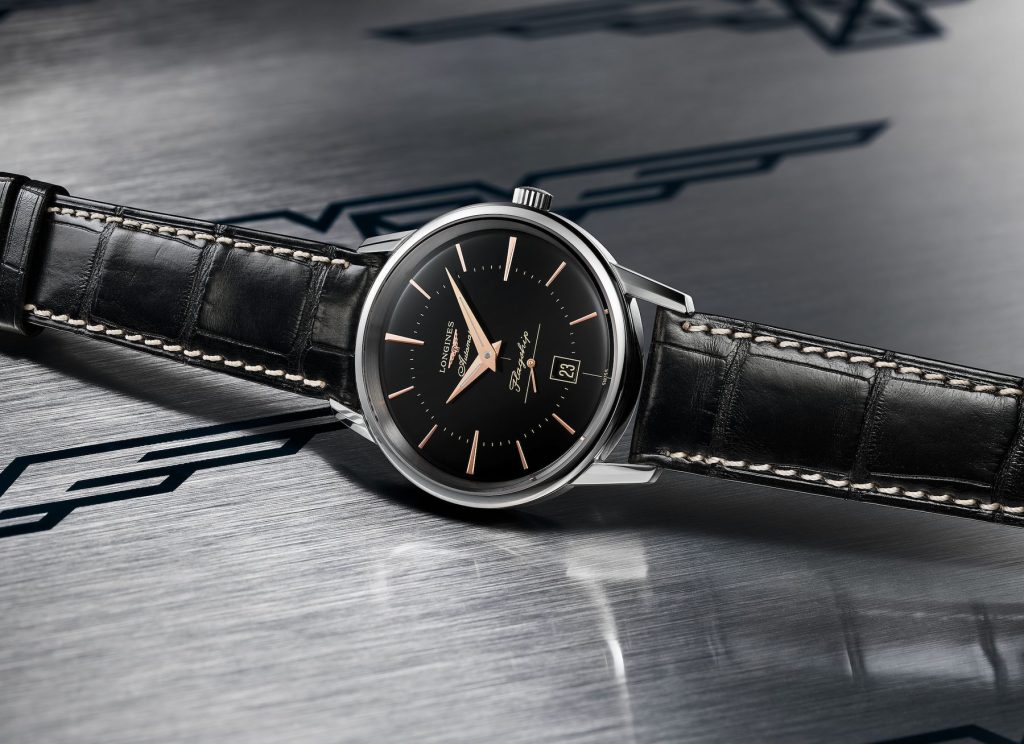
Longines has built its reputation on precision and quality, reflected in its movement choices and overall craftsmanship. The brand primarily uses ETA movements, many of which are exclusive to Longines and feature special modifications or enhancements. These "Longines calibers" often boast improved power reserves, added complications, or aesthetic refinements that set them apart from standard ETA offerings. For instance, the L888 automatic movement, based on the ETA A31.L01, features an extended 64-hour power reserve and a silicon balance spring for improved accuracy and magnetic resistance.
Longines' commitment to craftsmanship is also evident in their attention to detail, with many models featuring elaborately finished cases, applied indices, and finely executed dial work. The brand's dedication to quality extends to its production processes, where traditional watchmaking techniques are combined with modern technology to ensure consistency and precision. This blend of heritage and innovation in Longines' approach to movements and craftsmanship appeals to watch enthusiasts who appreciate the finer details of horological engineering.
Tissot: Innovative Technology and Accessible Quality
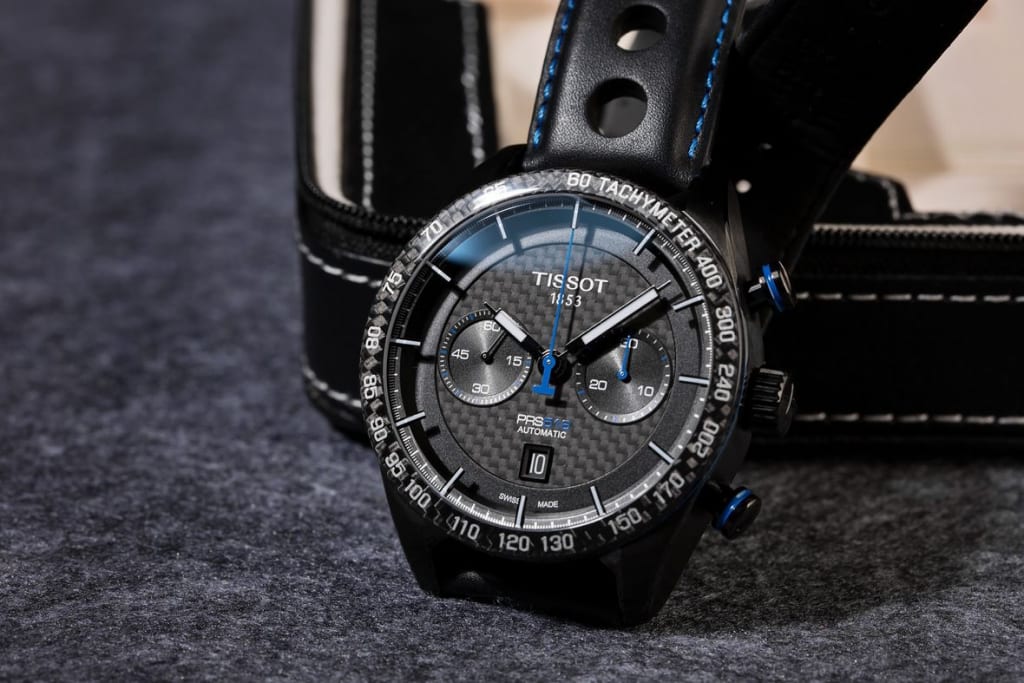
Tissot's approach to movements and craftsmanship balances Swiss quality with accessibility and innovation. The brand utilizes a mix of ETA movements (both companies are part of the Swatch Group) and its own proprietary technologies. Tissot's commitment to innovation is perhaps best exemplified by its T-Touch technology, which integrates touch-sensitive sapphire crystals with multiple functions. This unique approach to watch functionality showcases Tissot's ability to think outside the traditional boundaries of mechanical watchmaking.
In terms of mechanical movements, Tissot offers a range of options, from basic ETA calibers to more sophisticated movements with additional complications. The Powermatic 80 movement, featured in many Tissot models, offers an impressive 80-hour power reserve at a competitive price point. Tissot's craftsmanship also shines in its use of diverse materials, from traditional stainless steel to more avant-garde options like ceramic and tactile sapphire crystals. This versatility in both movements and materials allows Tissot to cater to a wide range of preferences and budgets while maintaining the standards of Swiss watchmaking.
When comparing the craftsmanship and movements of Longines and Tissot, it's clear that both brands uphold the standards of Swiss watchmaking, albeit with different emphases. Longines leans towards a more traditional approach, focusing on refined mechanics and exclusive calibers that appeal to purists and those who appreciate subtle horological details. Tissot, while maintaining Swiss quality, places a stronger emphasis on innovation and accessibility, offering advanced technologies and robust movements at more attainable price points.
This distinction allows watch enthusiasts to choose based on their priorities: those seeking classic Swiss craftsmanship might gravitate towards Longines, while those intrigued by modern horological innovations may find Tissot more appealing. Ultimately, both brands demonstrate that Swiss precision comes in various forms, catering to different preferences within the luxury watch market.
Technology and Innovation: Traditional Excellence vs. Modern Advancements
In the ever-evolving world of horology, the balance between traditional craftsmanship and modern innovation plays a crucial role in defining a brand's identity. Longines and Tissot, while both committed to Swiss watchmaking excellence, have taken different paths when it comes to embracing new technologies.
Longines: Refined Precision in Classic Form
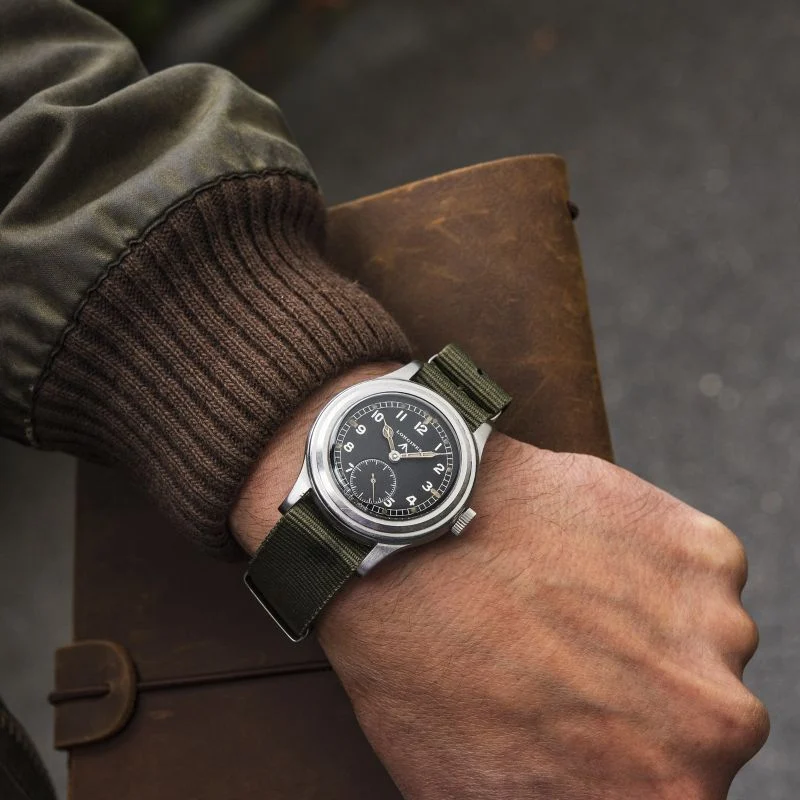
Longines' approach to technology and innovation is rooted in its commitment to traditional watchmaking excellence. The brand focuses on refining and perfecting established horological techniques rather than pursuing cutting-edge digital technologies. This is evident in their development of high-precision quartz movements, such as the Longines Conquest VHP (Very High Precision) line, which offers exceptional accuracy of ±5 seconds per year. These movements represent Longines' ability to push the boundaries of traditional timekeeping without straying from its classical roots.
Longines has also made significant strides in improving mechanical movements, incorporating modern materials like silicon for balance springs to enhance performance and reliability. The brand's innovations often center around improving chronograph functions and developing ultra-thin movements, staying true to its heritage in precision timing and elegant design. While Longines may not be at the forefront of smartwatch technology, its dedication to enhancing traditional watchmaking techniques ensures that each timepiece is a refined example of horological craft, appealing to purists and those who appreciate the art of classic watchmaking.
Tissot: Pioneering Smart Features and Materials

Tissot has positioned itself as a pioneer in watchmaking technology, consistently pushing the boundaries of what a watch can do. The brand's most notable innovation is the T-Touch technology, first introduced in 1999, which revolutionized the watch industry with its touch-sensitive sapphire crystal. This technology has evolved over the years, culminating in the Tissot T-Touch Connect Solar, a hybrid smartwatch that combines traditional Swiss watchmaking with modern connectivity features. The Tissot T-Touch line exemplifies brandt's commitment to blending traditional craftsmanship with cutting-edge technology, offering functionalities like compass, altimeter, weather forecasting, and even connected features in more recent models.
Tissot has also been at the forefront of material innovation, experimenting with ceramics, carbon composites, and even wood in their watch designs. The brand's commitment to accessible luxury is evident in their implementation of advanced features like solar charging and multi-function displays in watches at various price points. Additionally, Tissot's role as the official timekeeper for various sports events has driven innovations in sports timing and chronograph functions. This multifaceted approach to innovation makes Tissot a go-to brand for those who appreciate the marriage of traditional watchmaking with modern technology, offering a diverse range of timepieces that cater to both classic watch enthusiasts and tech-savvy consumers.
The contrasting approaches to technology and innovation between Longines and Tissot offer watch enthusiasts distinct choices. Longines appeals to those who value traditional horological advancements, focusing on precision and refinement within the realm of classic watchmaking. This approach results in timepieces that offer exceptional accuracy and craftsmanship while maintaining a timeless aesthetic.
Tissot, on the other hand, caters to a more tech-savvy audience, providing watches that incorporate smart features and innovative materials alongside Swiss quality. This makes Tissot an attractive option for those who want the prestige of a Swiss watch combined with the functionality of modern technology. Ultimately, the choice between these brands in terms of technology and innovation depends on whether one prefers the subtle refinements of traditional watchmaking or the bold advancements of modern horology.
Pricing and Affordability: Luxury at Different Tiers
When it comes to luxury watches, pricing plays a significant role in a buyer's decision-making process. Longines and Tissot, while both offering Swiss-made timepieces, occupy different price segments within the luxury watch market. Understanding these differences can help potential buyers align their expectations with their budget.
Longines: Premium Pricing for Elevated Luxury

Longines positions itself firmly in the mid to high-end luxury watch segment. The brand's pricing reflects its status as a prestigious Swiss watchmaker with a long history of excellence. Longines watches typically range from around $1,000 for entry-level quartz models to over $5,000 for more complex mechanical timepieces or those with precious metals. This pricing structure places Longines in a sweet spot within the luxury market, offering a taste of high-end Swiss watchmaking at prices that, while premium, are still more accessible than ultra-luxury brands.
The brand's flagship collections, such as the Longines Heritage or the Master Collection lines, often command higher prices due to their sophisticated movements, premium materials, and refined finishing. Longines justifies its pricing through its commitment to quality, the use of exclusive movements, and the brand's strong heritage in luxury watchmaking. For many watch enthusiasts, owning a Longines represents a significant step into the world of high-end Swiss timepieces, offering a balance of prestige, craftsmanship, and relative value compared to ultra-luxury brands. This positioning makes Longines an attractive option for those looking to invest in a luxury watch that carries both historical significance and modern refinement.
Tissot: Accessible Luxury with Swiss Pedigree
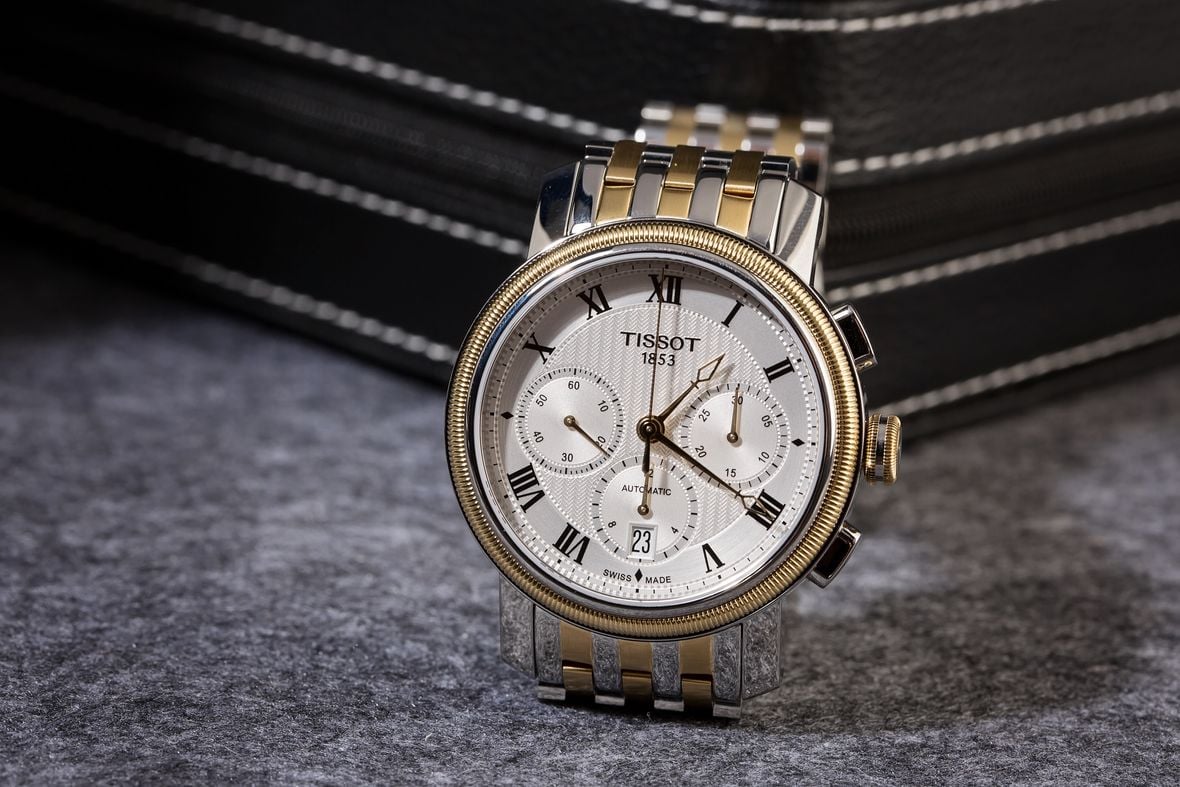
Tissot has carved out a niche in the luxury watch market by offering Swiss-made timepieces at more accessible price points. The brand's pricing strategy aligns with its philosophy of making Swiss quality available to a broader audience. Tissot watches typically range from around $300 for basic quartz models to about $2,000 for high-end automatic watches or those featuring advanced technologies like the T-Touch. This wide price range allows Tissot to cater to various consumer segments, from first-time Swiss watch buyers to seasoned collectors looking for innovative features without breaking the bank.
Despite its more affordable pricing, Tissot maintains its commitment to quality and innovation. The brand offers features like sapphire crystals, Swiss-made movements, and advanced functionalities even in its lower-priced models. This approach has made Tissot a popular choice for those seeking the prestige of a Swiss watch brand without the hefty price tag often associated with luxury timepieces. Additionally, Tissot's diverse collection, which includes everything from classic dress watches to cutting-edge sports models, ensures that there's a Swiss-made option for almost every budget and style preference within their price range.
The pricing strategies of Longines and Tissot reflect their distinct market positions and target audiences. Longines appeals to buyers who are willing to invest more for a watch that carries greater prestige and embodies traditional luxury watchmaking. The higher price point often correlates with more refined movements, exclusive designs, and a stronger emphasis on heritage. Tissot, on the other hand, attracts customers who seek the quality and innovation of Swiss watchmaking at a more accessible price point.
This approach has made Tissot a popular choice for both newcomers to the world of luxury watches and experienced collectors who appreciate the brand's value proposition. Ultimately, the choice between Longines and Tissot in terms of pricing often comes down to the buyer's budget, their prioritization of brand prestige versus functionality, and where they see their purchase fitting into their overall watch collection or lifestyle.
Resale Value and Brand Reputation: Investment Potential and Market Perception
When investing in a luxury timepiece, many buyers consider not just the immediate appeal of the watch but also its potential to retain value over time. The resale value of a watch is closely tied to its brand reputation, and in this respect, Longines and Tissot offer different propositions to potential buyers.
Longines: Heritage-Driven Value Retention

Longines enjoys a strong reputation in the luxury watch market, supported by its long history and association with elegance and precision. This established prestige contributes positively to the brand's resale value. Longines watches, particularly those from popular collections like the Master Collection or vintage-inspired pieces from the Heritage line, tend to hold their value well in the secondary market. The brand's consistent positioning in the mid to high-end luxury segment helps maintain stable resale values.
Limited edition models or those with unique complications often appreciate over time, making them attractive to collectors. Longines' association with specific sports, such as equestrian events and alpine skiing, also adds to the desirability of certain models, potentially boosting their resale value. The brand's reputation for quality and precision, backed by its long-standing history in watchmaking, provides a sense of confidence to buyers in the secondary market.
However, it's worth noting that while Longines watches generally retain value better than many entry-level luxury brands, they may not appreciate as dramatically as some ultra-luxury Swiss brands. Nonetheless, for buyers looking for a balance of prestige, quality, and investment potential, Longines presents a solid option in the luxury watch market. The brand's commitment to classic design and technical excellence ensures that many of its models remain desirable long after their initial purchase, contributing to their strong performance in the resale market.
Tissot: Accessibility with Selective Value Retention
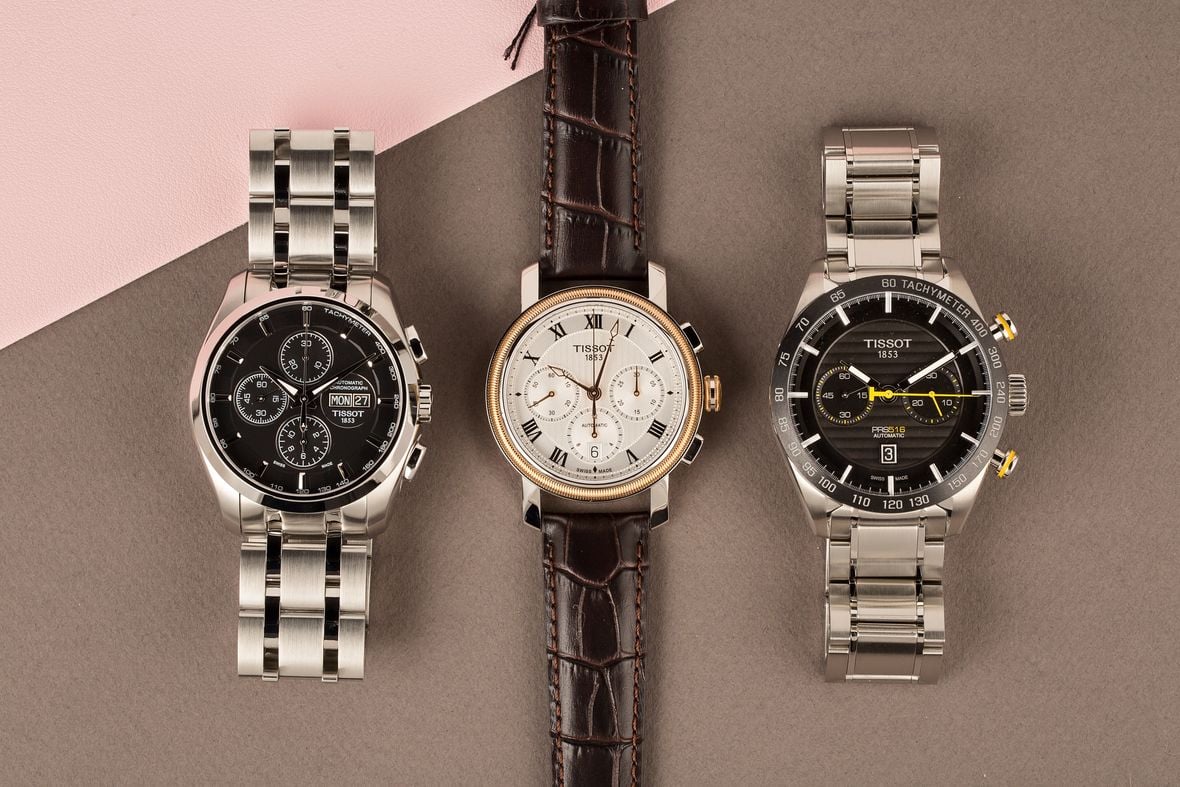
Tissot's reputation in the watch market is built on its ability to offer Swiss quality and innovation at more accessible price points. This positioning affects its resale value dynamics differently from higher-end luxury brands. Generally, Tissot watches may not retain their value as strongly as more premium brands in percentage terms, largely due to their initial lower price points and wider availability. However, this doesn't mean that Tissot watches are without value in the secondary market.
Certain Tissot models, particularly limited editions, innovative designs like the T-Touch series, or heritage-inspired pieces like the PRX, can maintain good resale values and even appreciate over time. These watches often attract enthusiasts who appreciate Tissot's blend of Swiss craftsmanship and innovative features, creating demand in the secondary market. Tissot's strong brand recognition and reputation for quality contribute positively to its presence in the pre-owned watch market.
For buyers, this means that while a Tissot watch may not be primarily viewed as a financial investment, it offers excellent value for money in terms of Swiss craftsmanship and innovative features. The brand's diverse range of styles and technologies means that certain models may become sought after by collectors, potentially increasing in value. Additionally, Tissot's more accessible price points make it easier for buyers to enter the Swiss watch market, with the possibility of trading up to higher-end brands in the future while still recouping a portion of their initial investment.
When comparing Longines and Tissot in terms of resale value and brand reputation, it's clear that they cater to different segments of the watch market. Longines, with its higher price points and more exclusive positioning, generally offers better value retention and potential for appreciation, especially for select models. This makes Longines an attractive option for buyers who view their watch purchase as a potential investment as well as a personal accessory. Tissot, while perhaps not matching Longines in terms of pure value retention, offers exceptional value for money at the point of purchase.
The brand's reputation for innovation and accessible luxury means that while resale values may not be as high in percentage terms, the initial outlay is lower, making Tissot watches an excellent choice for those prioritizing features and Swiss quality over long-term value retention. Ultimately, the choice between these brands should be guided by personal preferences, budget considerations, and whether the primary goal is long-term value retention or immediate enjoyment of Swiss watchmaking at a more accessible price point.
Iconic Model Comparisons: Signature Timepieces Face Off

To truly understand the essence of Longines and Tissot, it's illuminating to compare some of their most iconic models. These flagship timepieces embody each brand's philosophy, craftsmanship, and target market. Let's explore three key comparisons that highlight the distinct approaches of these Swiss watchmaking giants.
Longines Master Collection vs. Tissot Le Locle: Classic Elegance Defined
The Longines Master Collection and Tissot Le Locle represent the epitome of classic dress watches from their respective brands. The Longines Master Collection, introduced in 2005, has become a cornerstone of the brand's lineup. These watches typically feature elegant guilloche dials, Roman numeral hour markers, and blued steel hands. Powered by sophisticated automatic movements, often with additional complications like moonphase or chronograph functions, Master Collection pieces exude refined luxury. Prices for these watches usually range from $1,500 to $3,500, depending on the specific model and complications.
In contrast, the Tissot Le Locle, named after the brand's hometown, offers similar classic styling at a more accessible price point. Le Locle watches often feature sunburst or textured dials, applied indices, and date functions. While not as feature-rich as their Longines counterparts, Tissot Le Locle models are powered by reliable automatic movements and typically priced between $500 and $1,000. This makes the Le Locle an attractive entry point for those seeking a Swiss-made dress watch with traditional aesthetics.
Longines HydroConquest vs. Tissot Seastar: Diving into Sports Watches
In the realm of dive watches, both brands offer compelling options that showcase their approach to sports timepieces. The Longines HydroConquest is a premium diver's watch, boasting 300m water resistance, unidirectional ceramic bezels, and robust automatic movements. With its refined design and high-quality construction, the HydroConquest bridges the gap between a professional tool watch and an elegant sports timepiece. Prices for HydroConquest models typically range from $1,200 to $2,500.
Tissot’s Seastar 1000 line offers impressive specifications at a more budget-friendly price point. These watches feature 300m water resistance, ceramic bezels on some models, and either quartz or automatic movements. The Seastar design tends to be more modern and bold compared to the HydroConquest, often incorporating bright colors and sportier aesthetics. Priced between $400 and $1,000, the Seastar 1000 represents excellent value for those seeking a capable dive watch without breaking the bank.
Longines Conquest vs. Tissot PRX: Versatile Sports Elegance
The Longines Conquest and Tissot PRX lines exemplify each brand's take on versatile sports-elegant timepieces. The Longines Conquest collection offers a range of styles, from dressy to sporty, all built around a robust case design suitable for everyday wear. These watches often feature simple, legible dials, date functions, and a mix of quartz and automatic movement options. With its more premium positioning, Conquest watches typically range from $1,000 to $2,500, offering a blend of versatility and luxury.
Tissot's PRX, particularly in its recent reintroduction, has become a sensation in the watch community. Drawing inspiration from 1970s integrated bracelet designs, the PRX offers a trendy retro-modern aesthetic at an accessible price point. Available in quartz and automatic versions, with various dial colors and even a chronograph option, the Tissot PRX range starts at around $375 for quartz models and goes up to about $1,800 for the most advanced automatic versions. The PRX line demonstrates Tissot's ability to capture current watch trends and deliver them with Swiss quality at competitive prices.
These iconic model comparisons highlight the distinct approaches of Longines and Tissot. Longines consistently positions itself in the premium segment, offering refined designs, advanced movements, and a focus on traditional luxury. Tissot, while maintaining Swiss quality standards, provides more accessible options with a greater emphasis on modern design trends and value for money. Both brands excel in their respective market segments, catering to different consumer needs and preferences within the broader luxury watch market. Whether one prefers the established prestige of Longines or the innovative value proposition of Tissot often comes down to personal style, budget considerations, and the specific role the watch will play in one's collection or lifestyle.
Tissot vs Longines: Final Thoughts

As we conclude our comprehensive comparison of Tissot and Longines, it's clear that both brands offer exceptional timepieces that cater to different segments of the luxury watch market. Each brand brings its unique strengths and appeal to the table, making the choice between them a matter of personal preference, budget, and individual needs.
Longines, with its rich heritage and focus on traditional luxury, appeals to those who value classic elegance and are willing to invest in a more premium timepiece. The brand's commitment to refined craftsmanship, exclusive movements, and timeless designs makes it an excellent choice for watch enthusiasts looking to step into the world of high-end Swiss watchmaking. Longines watches often serve as milestone purchases or statement pieces, offering a blend of prestige and quality that can be treasured for generations.
Tissot, on the other hand, excels in providing accessible luxury and innovative features. The brand's ability to offer Swiss-made watches with advanced technologies at competitive price points makes it an attractive option for a wide range of consumers. From first-time luxury watch buyers to seasoned collectors looking for something unique, Tissot's diverse lineup caters to various tastes and budgets. The brand's focus on innovation, as seen in its T-Touch technology and use of modern materials, positions it as a forward-thinking watchmaker that doesn't shy away from pushing boundaries.
Ultimately, the decision between Tissot and Longines comes down to what you prioritize in a timepiece. If you're drawn to traditional luxury, classic designs, and are willing to invest in a watch with strong heritage and potential for value retention, Longines might be the perfect choice. However, if you're looking for a blend of Swiss quality, innovative features, and more accessible pricing, Tissot offers compelling options that deliver excellent value for money.
Both brands uphold the standards of Swiss watchmaking, ensuring that whichever you choose, you'll be wearing a piece of horological excellence on your wrist. Whether you opt for the timeless elegance of Longines or the innovative spirit of Tissot, you're investing in a watch that carries the proud legacy of Swiss craftsmanship. Consider your personal style, budget, and the role you want your watch to play in your life, and you'll find that both Tissot and Longines offer exceptional timepieces that can meet your needs and exceed your expectations.
With over two decades of experience in the luxury watch industry, the Bob's Watches Editorial Team stands at the forefront of watch expertise and insight. Our team, composed of seasoned watch enthusiasts, skilled horologists, and knowledgeable industry insiders, is dedicated to bringing you the latest and most accurate information in the world of luxury timepieces. We pride ourselves on our meticulous attention to detail and our unwavering commitment to authenticity. Our editorial content is a reflection of our passion for luxury watches and our dedication to providing our readers with comprehensive, unbiased, and up-to-date information. Our expertise spans a wide range of topics, including in-depth reviews of the latest models, historical retrospectives of iconic timepieces, and insightful analyses of market trends. We are also renowned for our detailed guides on watch maintenance and investment advice, making us a trusted resource for both seasoned collectors and new enthusiasts alike. As thought leaders in the watch industry, we understand the importance of staying ahead of the curve. That's why we continually update our knowledge and skills, ensuring that our readers receive the most current and relevant information. Whether you're seeking advice on your next luxury watch purchase or looking to deepen your understanding of watch craftsmanship, the Bob's Watches Editorial Team is here to guide you.